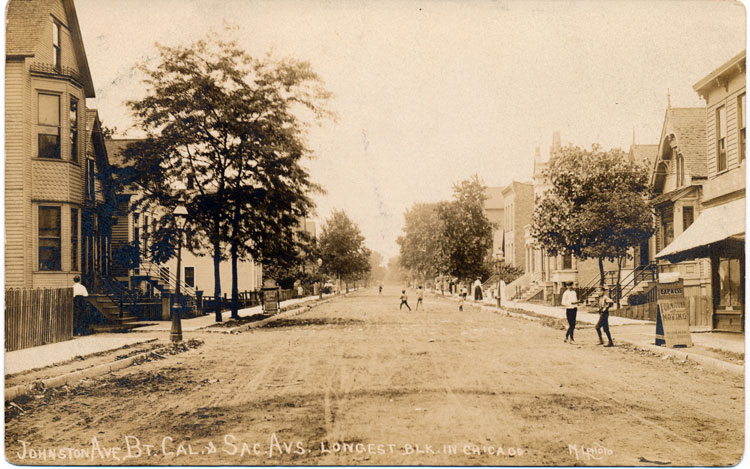
View looking west down Lyndale from California Ave. ca. 1908. Postcard image courtesy Logan Square Preservation.
Basement Businesses
Careful observers of the circa 1908 postcard photo looking down Lyndale may notice two signboard advertisements on the street. The Chicago of a hundred years ago had many more small businesses in residential areas. The city had regulated building construction since the 1870s but did not pass a comprehensive zoning ordinance until 1923 which limited the uses of buildings outside commercial areas.
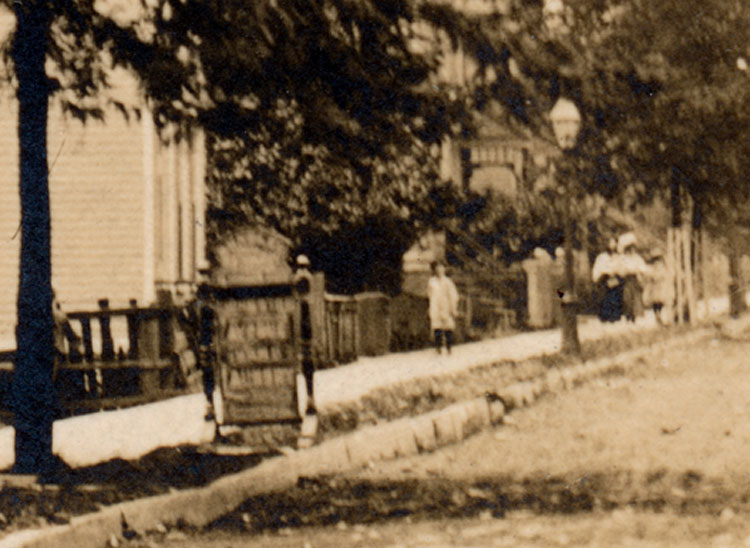
Detail of 22 Johnston Ave. from ca. 1908 postcard image courtesy Logan Square Preservation.
Squinting at the signboard on the left, it is possible to make out the middle words: "Johnston Avenue Hand Laundry." There is more text at the bottom and on the curved top panel, but it is too out-of-focus to decipher. In the 1910 census, Gustav & Ellen Larson rented the third house from the alley, at 2821 W. Lyndale (#22 on the map below), and ran a laundry in the basement. The Larsons had at that time six children, and perhaps 13-year-old Carl and 11-year-old Rudolph helped their parents with the washing, starching and ironing.
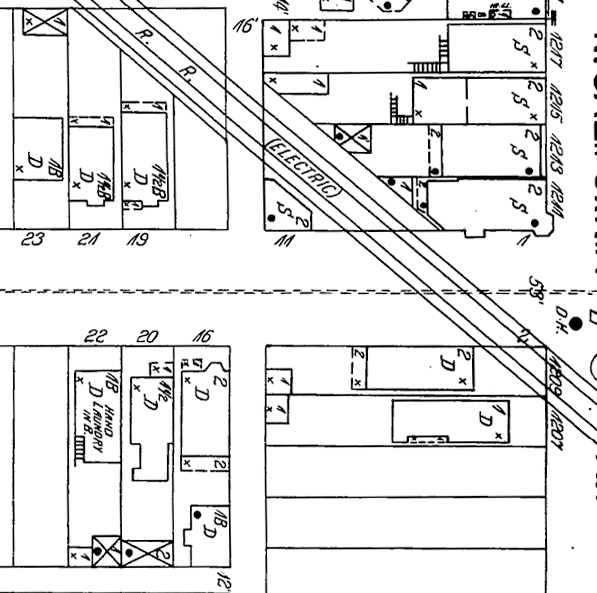
Detail of 1896 Sanborn Insurance Map
The laundry business had been established in the mid 1890s by the house owners John & Christina Walberg. John also worked as a blacksmith, which seems a bit cross-purposes to keeping the drying laundry clean if his blacksmith shop had been located in the shed in the backyard while the laundry business was in the basement.
By the 1920 census the Larsons had moved next door to 2819 (#20 on the map above) and Gustav was working as a window washer. Now Arthur & Ella Stuber lived in the house at 2821, and Arthur set up the basement as a cigar factory where he worked at wooden tables with his father and brother who were also cigarmakers.
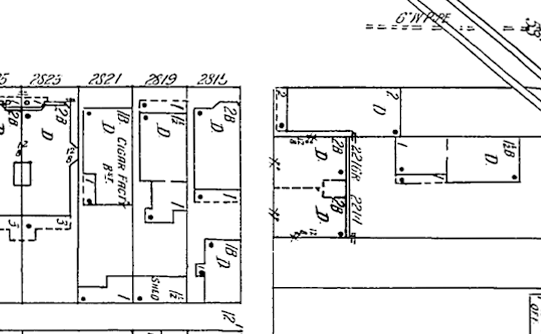
Detail of 1921 Sanborn Insurance Map
Like other small-scale cigar manufacturers, most likely they rolled higher-quality 10¢ cigars made from a combination of imported and Wisconsin tobacco rather than competing with the mass-produced 5¢ cigars that were then so popular. If they sold them to the shops and taverns around the corner on Milwaukee the smokes would have been a truly locally-made product.
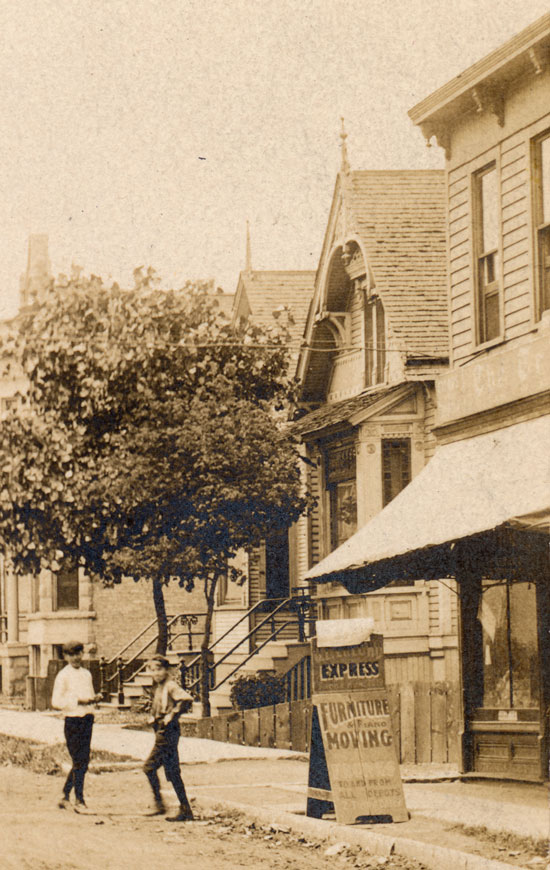
Detail of 11 Johnston Ave. from ca. 1908 postcard image courtesy Logan Square Preservation.
The sandwich board on the right is more in focus and readable:
O.E. Eklund
EXPRESS
Phone Num 2519
Furniture & Piano Moving
Trunks To And From All Depots
2 Times Daily
Oscar Eklund was an industrious lad with a strong back and access to a wagon, 26 years old in 1908, who lived with his mother and brother on the next block at 3028 W. Lyndale. The storefront behind the signboard was a candy shop previous to 1907 and after 1910, but its not clear what business was operating there in 1908. Did Eklund have an arrangement to place the sign there and perhaps take in orders at the shop? The moving business apparently didn't work out, as by 1909 he was working as a coal salesman, and in the 1910 census he was a tailor.
